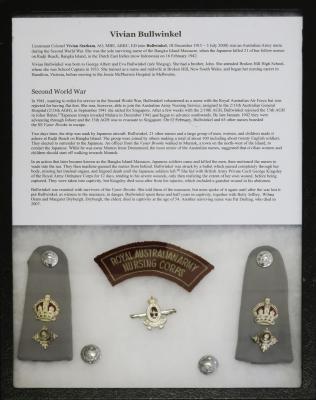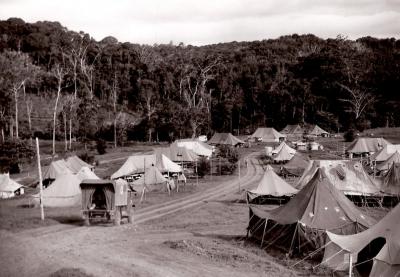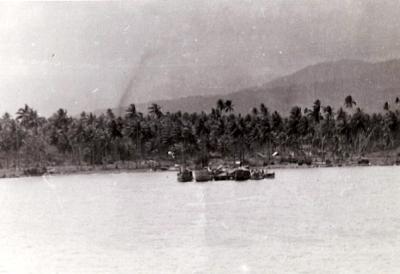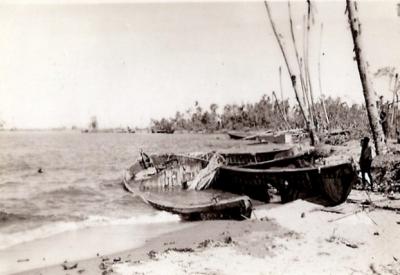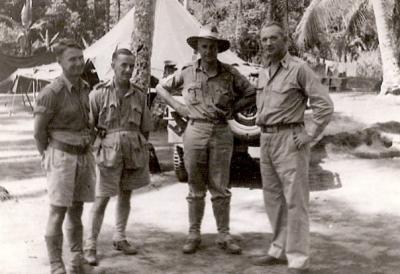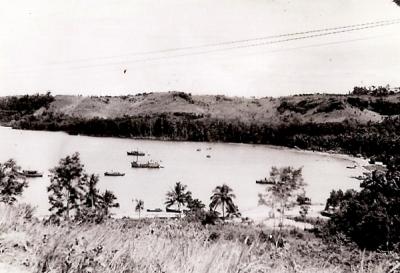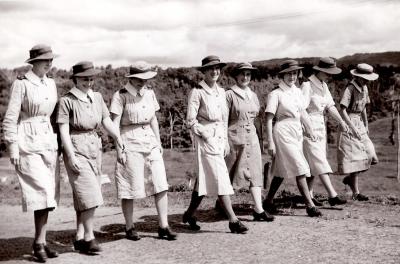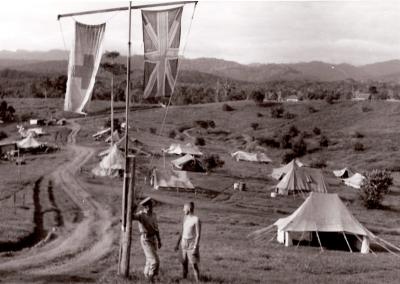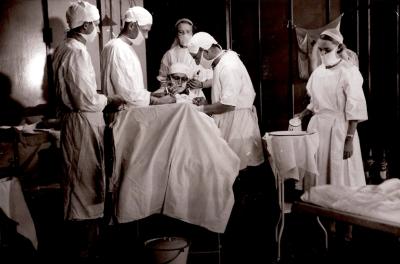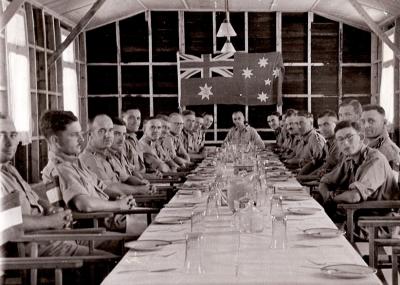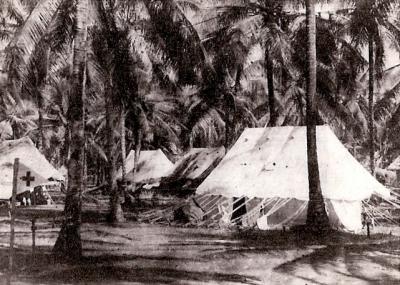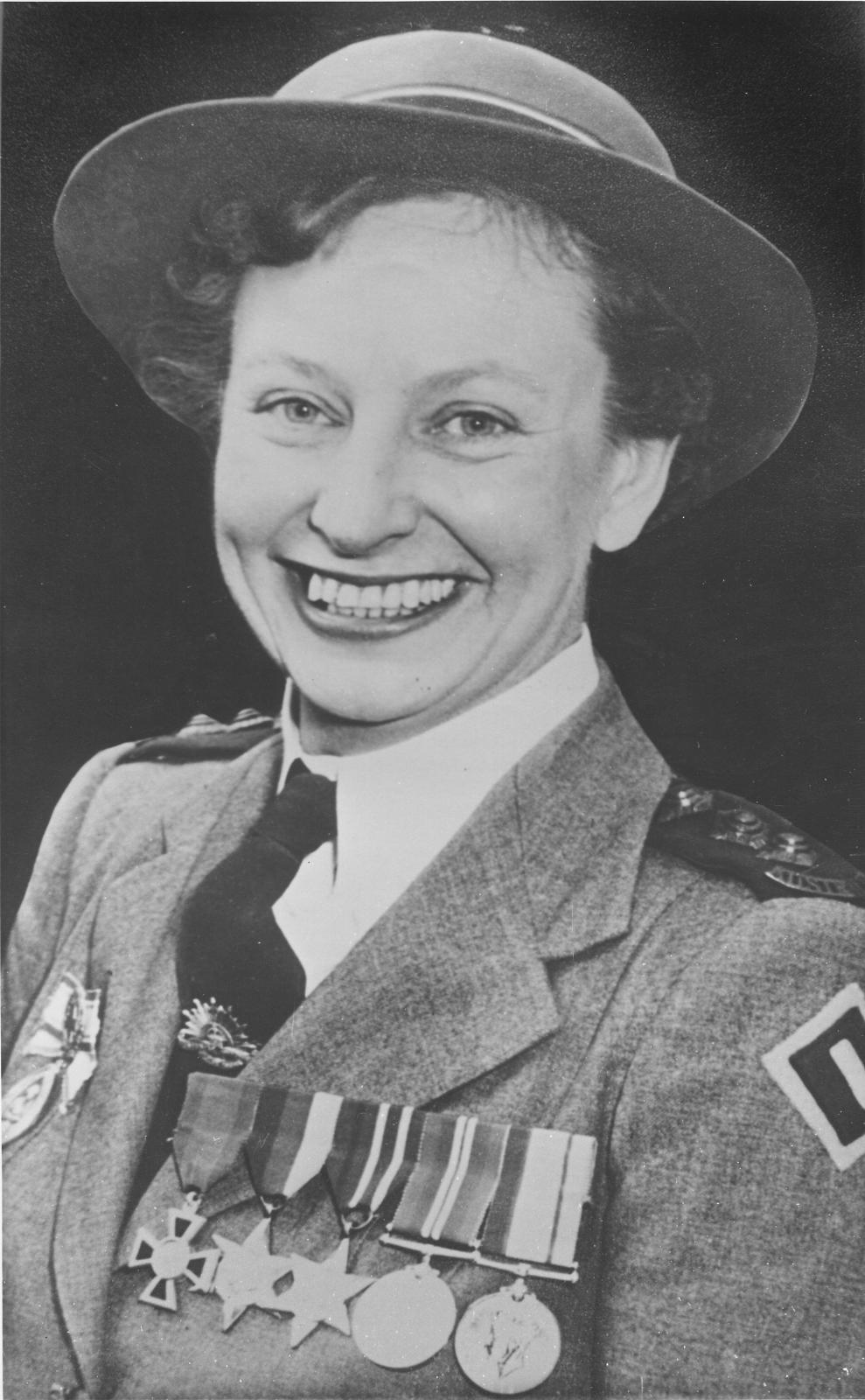World War 2, Australia, BULLWINKEL, 1945
1945Portrait of Captain Vivian Bullwinkel, Vyner Brooke and Bangka Island survivor
On 12 February 1942, Vyner Brooke was one the last ships carrying evacuees to leave Singapore. Although she usually only carried 12 passengers, in addition to her 47 crew, Vyner Brooke sailed south with 181 passengers embarked, most of them women and children. Among the passengers were the last 65 Australian nurses in Singapore. Throughout the daylight hours of 13 February Vyner Brooke laid up in the lee of a small jungle-covered island, but she was attacked late in the afternoon by a Japanese aircraft, fortunately with no serious casualties. At sunset she made a run for the Banka Strait, heading for Palembang in Sumatra. Prowling Japanese warships, however, impeded her progress and daylight on February 14th found her dangerously exposed on a flat sea just inside the strait.
Not long after 2 pm Vyner Brooke was attacked by several Japanese aircraft. Despite evasive action, she was crippled by several bombs and within half an hour rolled over and sunk bow first. Approximately 150 survivors eventually made it ashore at Banka Island, The island had already been occupied by the Japanese and most of the survivors were taken captive.
However, an awful fate awaited many of those that landed on Radji beach. There, survivors from the Vyner Brooke joined up with another party of civilians and up to 60 Commonwealth servicemen and merchant sailors, who had made it ashore after their own vessels were sunk. After an unsuccessful effort to gain food and assistance from local villagers, a deputation was sent to contact the Japanese, with the aim of having the group taken prisoner. Anticipating this, all but one of the civilian women followed behind. A party of Japanese troops arrived at Radji Beach a few hours later. They shot and bayoneted the males and then forced the 22 Australian nurses and the one British civilian woman who had remained to wade into the sea, then shot them from behind. There were only two survivors - Sister Vivian Bullwinkel, and Private Cecil Kinsley, a British soldier. After hiding in the jungle for several days the pair eventually gave themselves up to the Japanese. Kinsley died a few days later from his wounds, and Bullwinkel spent the rest of the war as an internee.
Of the 65 Australian nurses embarked upon the Vyner Brooke, 12 were killed during the air attack or drowned following the sinking, 21 were murdered on Radji Beach, and 32 became internees, 8 of whom subsequently died before the end of the war.
Details
Details
The story of Vyner Brook and the Banka Island Massacre is told in the Prisoner of War Gallery at the Australian Army Museum of WA
Australian Army Museum of Western Australia
Australian Army Museum of Western Australia
More items like this
Other items from Australian Army Museum of Western Australia
- World War 2, Papua New Guinea, Australian Army Medical Corps, 2/2 Casualty Clearing Station, 1943
- World War 2, Papua New Guinea, Australian Army Medical Corps, 2/2 Casualty Clearing Station, 1943
- World War 2, Papua New Guinea, Australian Army Medical Corps 2/2 Casualty Clearing Station, 1943
- World War 2, Papua New Guinea, Australian Army Medical Corps, 2/2 Casualty Clearing Station, 1943
- World War 2, Papua New Guinea, Australian Army Medical Corps, 2/2 Casualty Clearing Station, 1943
- World War 2, Papua New Guinea, Australian Army Medical Corps, 2/2 Casualty Clearing Station, 1943
- World War 2, Papua New Guinea, Australian Army Medical Corps 2/2 Casualty Clearing Station, 1943
- World War 2, Papua New Guinea, Australian Army Medical Corps 2/2 Casualty Clearing Station, 1943
- World War 2, Papua New Guinea, Australian Army Medical Corps, 2/2 Casualty Clearing Station, 1943
- World War 2, Papua New Guinea, Australian Army Medical Corps 2/2 Casualty Clearing Station, 1943
- World War 2, Papua New Guinea, Australian Army Medical Corps 2/2 Casualty Clearing Station, 1943
- World War 2, Papua New Guinea, 2/2 Casualty Clearing Station, 1944
